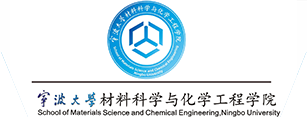Time: 9:30, Nov.1, 2024
Venue: Conference Room 1227, No.1 Laboratory Building, North Campus
Lecturer: Dr. Peter Tatarko
Lecturer Introduction:
Dr. Peter Tatarko is a senior researcher, and a vice-chair of the management board at the Institute of Inorganic Chemistry of Slovak Academy of Sciences in Bratislava, Slovakia. After receiving a PhD degree in Materials Science at the Institute of Materials Research of Slovak Academy of Sciences in 2011, for 2 years he worked at the Institute of Physics of Materials of the Czech Academy of Sciences, and 3 years at Queen Mary University of London at the School of Engineering and Materials Sciences. Since 2017, he has worked as a senior researcher at the Institute of Inorganic Chemistry. His research activities are focused on the development of new ceramic materials for extreme environments, such as Ultra-High Temperature Ceramics, or High Entropy Ceramics, and the development of new joining materials and technologies for integration of advanced ceramics for aerospace and nuclear applications. He is an Associate Editor of the International Journal of Applied Ceramic Technology of the American Ceramic Society. He was a principal investigator of several projects funded by European Commissions (within FP7, and H2020 schemes), and many national projects. Dr. Peter Tatarko has supervised 5 PhD students. He has recently received a funding from European Union with the total budget of 3 mil. € to build a new lab on high-entropy oxides for thermoelectric applications.
Lecture Introduction:
The present work reports the preparation, characterisation, and mechanical properties of novel diboride ceramics for extreme applications. It is divided into three parts. The first part will focus on the effect of rare-earth (RE) oxides and RE zirconates (2 – 10 wt.%) on the densification, microstructure, and mechanical properties of ZrB2-25vol.%SiC composites. The ablation resistance of the RE-containing composites tested at 2700°C was significantly improved by 80 % when ZrB2-25vol.%SiC sintered with 10 wt.% RE additive is compared to RE-free diborides. In the second part, highly pure (Ti-Zr-Hf-Nb-Ta)B2 high-entropy boride ceramics (HEBs) were produced by two-step spark plasma sintering, consisting of boro/carbothermal reduction of oxide precursors and pressure-assisted sintering. The room temperature mechanical properties of HEB continuously increased with the increasing amount of SiC up to 20 vol.%, while the dynamic oxidation rate of the materials significantly decreased. It was concluded that the (Ti-Zr-Hf-Nb-Ta)B2 composite sintered with 20 vol.% SiC showed the best combination of room and high temperature mechanical properties. The third part will focus on the preparation of highly textured TiB2 ceramics by slip casting an aqueous suspension in a magnetic field of 9 T, followed by sintering using SPS. The sintered material exhibited a Lotgering orientation factor of 0.90, with the c-axis of TiB2 oriented parallel to the magnetic field and SPS pressing direction. The textured TiB2 material exhibited a significant anisotropy in mechanical properties, such as hardness, elastic modulus and wear resistance.



